New Retail Coffee or Capital destroys freshness: what is the quality of the savage expansion of luckin coffee
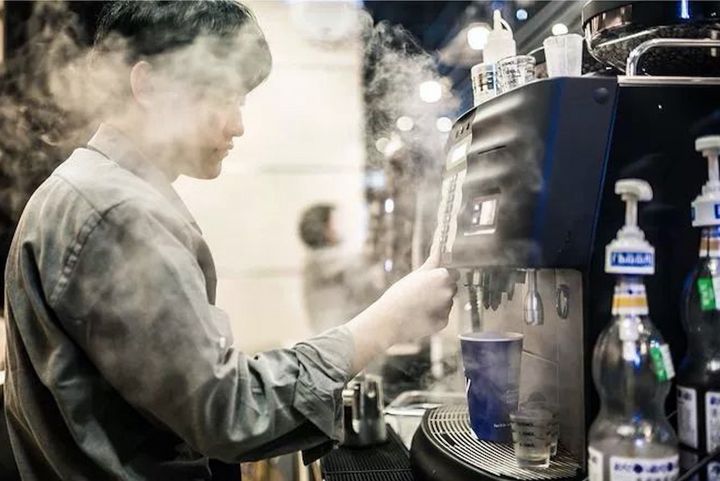
Professional coffee knowledge exchange more coffee bean information please follow the coffee workshop (Wechat official account cafe_style)
Almost overnight, a coffee brand named Luckin Coffee (luckin coffee) entered the vision of white-collar workers in first-and second-tier cities.
The way of entry is astonishingly brutal.
Take Shenzhen as an example.
About two weeks ago, I just heard about the brand luckin coffee; after I saw several screen brushes in moments, I installed their app. After opening app, I showed that there were no stores in Shenzhen that could serve temporarily, but there were already dozens of stores under "renovation". When I opened them again and again last week, I found that there were already take-out stores, and the backplane of Luckin Coffee's renovation appeared on the downstairs of my office building. When I came to the company again and again this week, I was surprised to find that Luckin Coffee was already open for business.
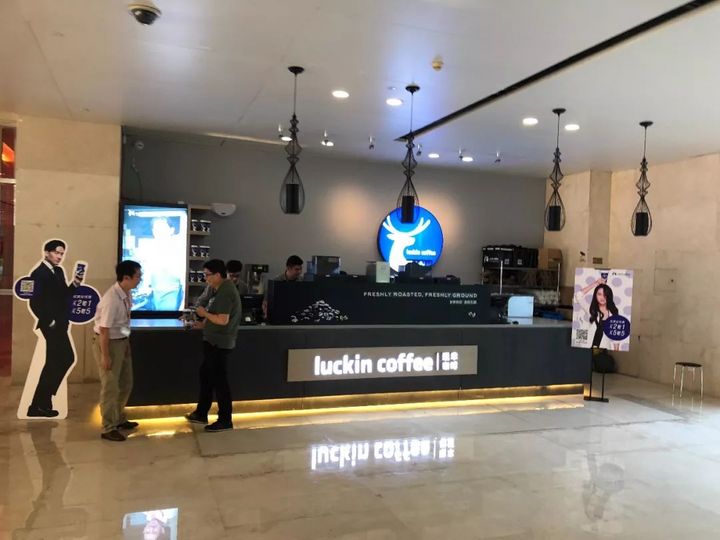
Chatting with the shop assistant, I also learned more information: Shenzhen has opened more than 20, and more than 40 will open before the end of April; more than 200 have opened across the country, with the goal of opening more than 500 by the end of April. By contrast, Xi Cha has 10 stores a year in Shenzhen.
In my impression, no offline entity-operated store has ever reached such a rate of expansion.
How good is Luckin Coffee's business? I asked the shop assistant: it is open on the first working day today, as of 4: 00 p.m., more than 300 orders have been placed, nearly 500 cups.
So, what is the level of Luckin Coffee's production?
In this short week, I have tasted all four kinds of Lucky coffee without milk sugar. On the whole, its coffee level is very close to that of Starbucks, and the taste of mixed beans is obviously close to that of Starbucks. The selling point of coffee is also very clear:
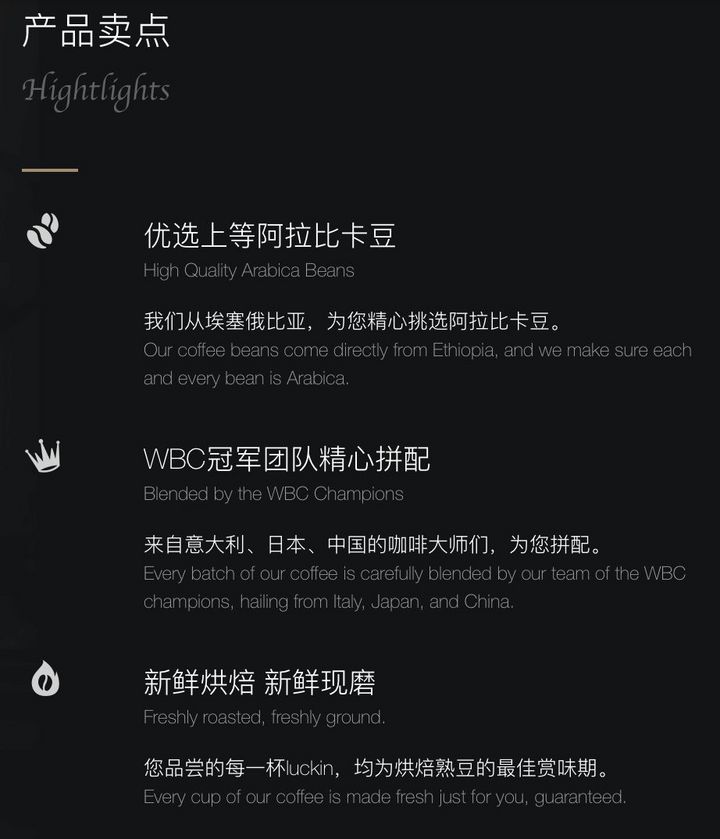
Good ingredients (Arabica), good adjustment (WBC champion team match), coupled with the most important freshness of coffee, constitute a very typical direct product selling point, directly targeting the needs of coffee consumers. Product positioning is also very clear: the price is set between 20-30 yuan, avoiding the mainstream price of 30-40 Starbucks, and 10-20 yuan of fast-food coffee such as McCoffee / KFC / the whole family.
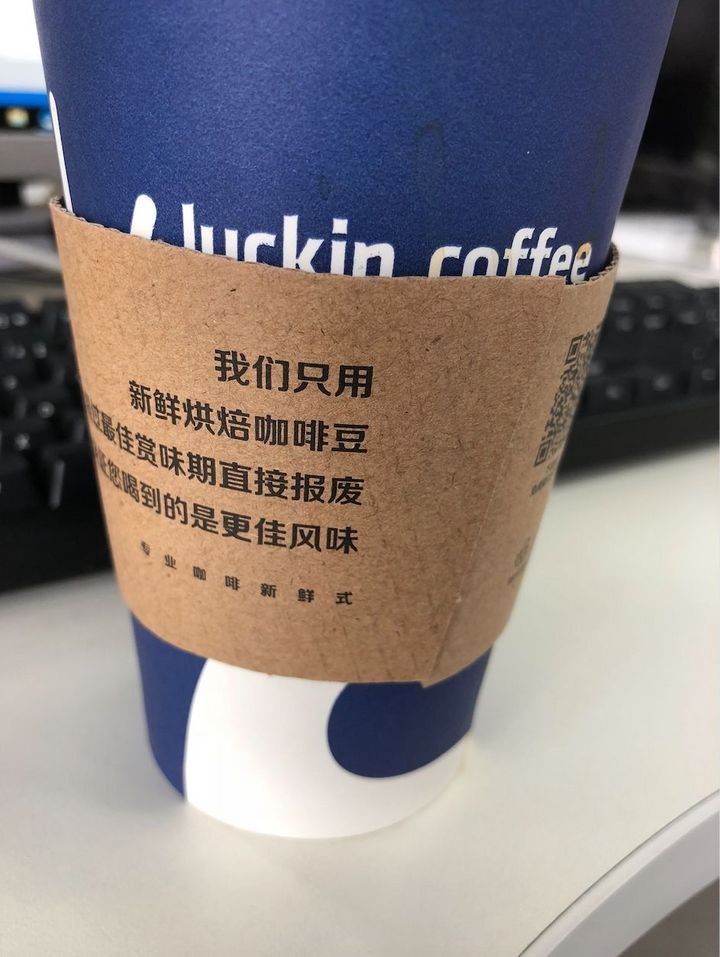
In addition to the clear definition of products and the rapid expansion of stores, Luckin Coffee also needs to solve the problems of brand and communication. How to get users to accept a new cup of coffee that is not a Starbucks brand and sells for between 20 and 30?
On the brand side, there is nothing special about Lucky's solution: star endorsements. Through Zhang Zhen and Tang Wei to eliminate the strangeness of the new brand, produce the effect of empathy, and then have a certain sense of intimacy to the brand. These two spokesmen belong to the type of excellent sense of quality, which should have been demonstrated more rigorously.
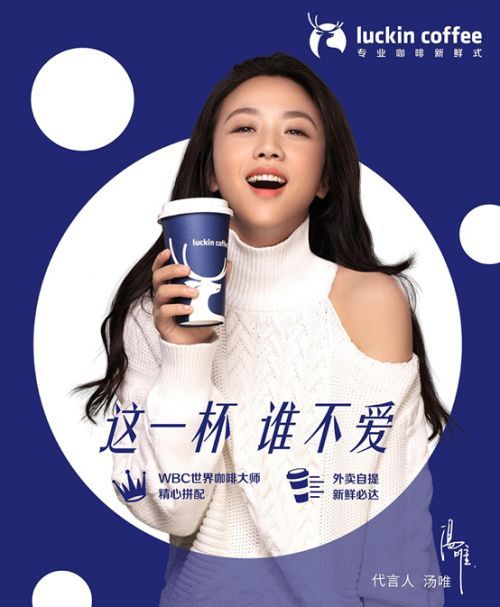
More importantly, on the marketing side. Although stores are scattered all over the core business districts of first-tier cities, how to get users to accept and try the first order is a problem that must be solved. Luckin coffee's method is actually very simple: sign up and give away a cup of free coffee. This is not the best part, and the best part is that if you recommend a friend to sign up, I will give you another drink. This very old-fashioned semi-pyramid scheme directly enables you to see their messages frequently in your moments, and the effect is quite remarkable.
(this is also where many people misunderstand marketing: in fact, marketing is not so mysterious, and it is not that the more magical the trick is, the more effective it is. The effective tricks are always those, and the difference is whether you can afford it or not. )
At the same time, they are also promoting a "buy two get one free, buy five get five free" activity. When a department meeting or several colleagues ordered coffee together, the average price was directly reduced to more than ten yuan, and this kind of promotion led to a surge in the number of Lucky users.
This high user subsidy policy and explosive expansion means that this is a typical Internet company. Yes, all Lucky's stores cannot be purchased in cash and must place an order on the official app. So every cup of coffee it sends represents the registration of a new user.
Considering that the cost of coffee itself is not high, Ruixing's cost of getting customers seems to be as high as 10-20 yuan (1-2 cups of free coffee), which is very high from a traditional retail point of view, but from an Internet point of view, the cost of new users of an app is not high. The way of thinking of the Internet determines the route of a new Internet brand, which must not consider profit first, get enough market capacity as quickly as possible, and even attract users to use habits with very high subsidies in the initial stage.
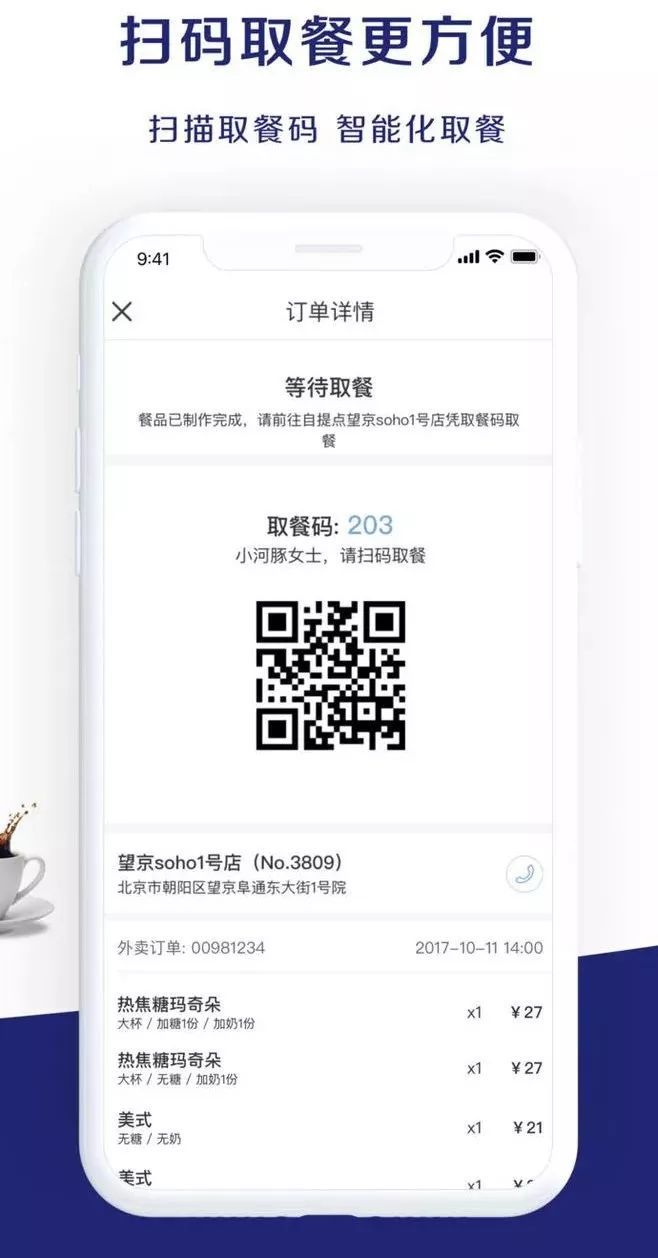
In the past year, Didi, Meituan and mobike have used this method to turn the traditional car rental and takeout markets upside down. Today, the coffee market also ushered in a company to do so.
Aiming at the potential outbreak trend of China's coffee market, Qian Zhiya, former director and deputy general manager of Shenzhou Youche Company, left last year to start luckin coffee (Luckin Coffee). At present, the brand and business model have basically taken shape. "China's coffee market is already on the eve of explosive growth, and what we want to create is a typical example of high-quality new retail coffee," Qian Zhiya told the media at the communication meeting. "I have prepared 1 billion yuan."
One billion yuan, the new retail of coffee.
Since then, "opening a coffee shop", a dream that all the fresh and fresh people have had, has been mercilessly torn apart by capital. Maybe in a few years, there will be no room for small cafes in this market. (as a matter of fact, it didn't exist either.)
Tell me about the coffee market.
As you all know, I have been very concerned about the beverage market for young people since Xi Cha (see: seriously, it may be this Chinese company that subverts Starbucks). At the same time, I am also a coffee lover. When it comes to coffee, and even when it comes to drinks, the giant that can't get around is Starbucks.
In fact, Starbucks is the evangelist of today's mainstream coffee culture. Before Starbucks, coffee did not generally occupy the market in such a fast way as it is today. Thirty years later, Starbucks is still the flagship of the coffee chain.
However, Starbucks' territory is not stable.
Not to mention the direct competition of Costa Coffee, Starbucks has the attack of McDonald's / KFC cheap fast food coffee and the pressure of a variety of niche boutique coffee. In fact, Starbucks' coffee level is only 70 or 80 points, not an excellent level. Most of the first coffee lovers trained by Starbucks have generated higher consumer demand and turned to a variety of higher-quality niche boutiques, while McCoffee offers cheap coffee that is actually close to the level. the gap is not wide open.
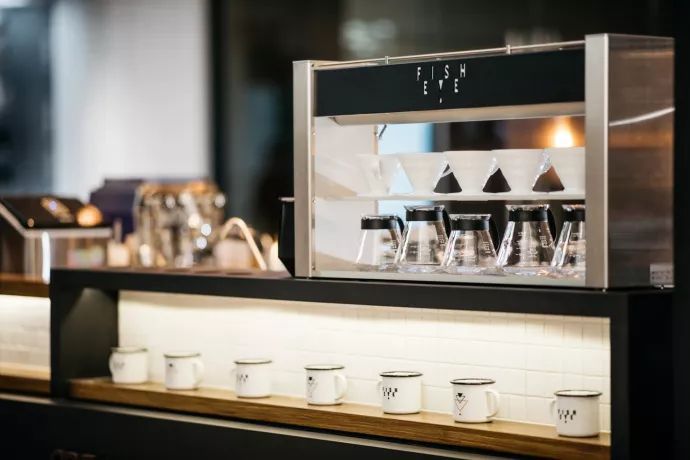
(minority boutique coffee: fisheye coffee)
Despite all kinds of competitive pressures, Starbucks is still innovating itself. In the past year, Starbucks has opened a number of selected coffee shops, selling more expensive hand-made and siphoned coffee, with selected beans from different places, in order to expand the influence of coffee culture and boost brand positioning.
But as an international brand, Starbucks is still too slow in the takeout market. If you want to have a Starbucks, you have to wait in a short line at the store to get it, which is still a little inconvenient for today's China.
This leaves a glimmer of room for the coffee takeout market.
There is actually a forerunner in the coffee takeout market: even coffee (Coffee Box).
Even Coffee was first established in 2012. At that time, Lian Coffee actually played mainly on Starbucks takeout. I was also one of the first users of Lian Coffee and enjoyed Starbucks takeout coffee several times. However, the delivery time was too long (in fact, the business model is that couriers take out after Starbucks ordered), and the packaging of the coffee was not perfect when it arrived, so I quickly gave up using it.
After 2015, Lian Coffee transformed, no longer giving other brands of coffee, but began to run its own coffee brand: Coffee Box. Through stationing in Meituan and other ways to solve logistics, and with very beautiful environmentally friendly carton packaging, and provide new flavors such as bulletproof coffee, has actually achieved a certain market share.
However, after drinking it a few times, I also gave up the brand: because the quality of the coffee itself really failed. Perhaps the focus is on the packaging, the level of coffee itself is quite ordinary, not even as good as the current grinding of KFC.
In fact, it can be seen from the introduction of Coffee Box's official website: there is not a word about materials and quality, but only the point of takeout.
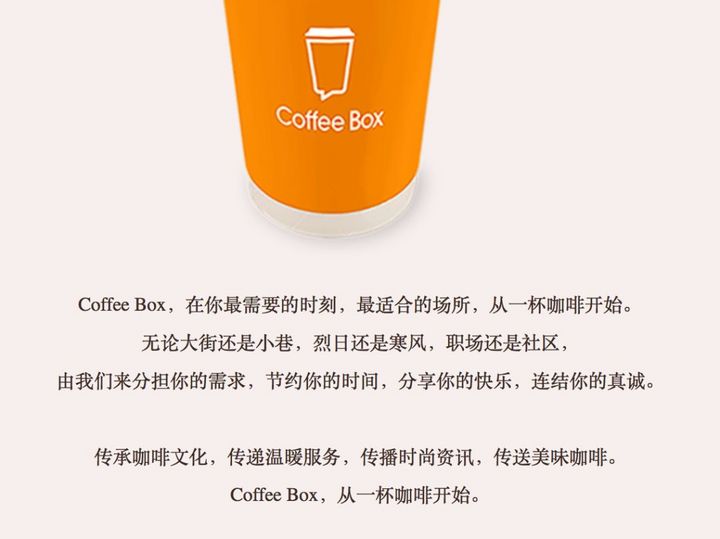
After so many years of development, how many take-out restaurants are there even today? The answer is more than 100.
Do you still remember the three-month store opening figure mentioned above?
without doubt. Lian Coffee met a crazy opponent. Judging from the current situation, Lian Coffee's chance of winning is very slim.
Ruixing's ambitions extend beyond takeout.
Chat with Luckin Coffee's manager while buying coffee. The manager told me that Luckin Coffee has four different types of stores: shop A (large flagship store), store B (small and medium-sized store with restaurant), lobby store (small store for self-pick-up in office building) and take-away store. Of course, the latter two stores currently occupy the absolute mainstream. Through the rapid expansion of the number of stores to reduce the difficulty for users to buy coffee, to establish a certain market size, and then through the AB store, a little bit to encroach on the stores in the core commercial areas of Starbucks, this should be Luckin Coffee's plan, but also the inevitable path.
Reading this, you may think that luckin coffee is bound to achieve great commercial success, in fact, business is not that simple.
I think luckin coffee needs to go through three important hurdles if it is to succeed:
1. A series of operational and management problems brought about by rapid expansion.
Any rapidly expanding enterprise will face similar problems: how to manage the team, how to train and motivate employees, how to ensure quality, and so on. In the four cups of takeout I ordered, I already encountered the problem that one cup of paper bag was broken and the other cup of iced coffee forgot to attach a straw. I believe that at such a speed, similar problems will be very common, and how to control them is a very important issue.
two。 Whether the quality of coffee can be maintained.
Product power is the foundation of modern brand, and it has long been a recognized fact that product is brand. In the rapid expansion, can luckin coffee maintain the current product level? Can you ensure that the product competitiveness is in the lead? In the face of lower-priced competitors, can you ensure the level of product materials? These are unknowns. Fortunately, the production process of coffee is simple and controllable. I believe that as long as we adhere to the correct values, the product quality can be guaranteed.
Do Chinese consumers really need a cup of coffee?
According to data provided by Luckin Coffee, Chinese mainland drinks only 5-6 cups of coffee per person per year. This figure may be less than what a heavy coffee user drinks in a week, but it just shows that more people never really get into the habit of drinking coffee on a daily basis.
Do Chinese white-collar workers need a cup of coffee or a cup of Starbucks? This is probably the biggest problem for all coffee practitioners.
END
Important Notice :
前街咖啡 FrontStreet Coffee has moved to new addredd:
FrontStreet Coffee Address: 315,Donghua East Road,GuangZhou
Tel:020 38364473
- Prev
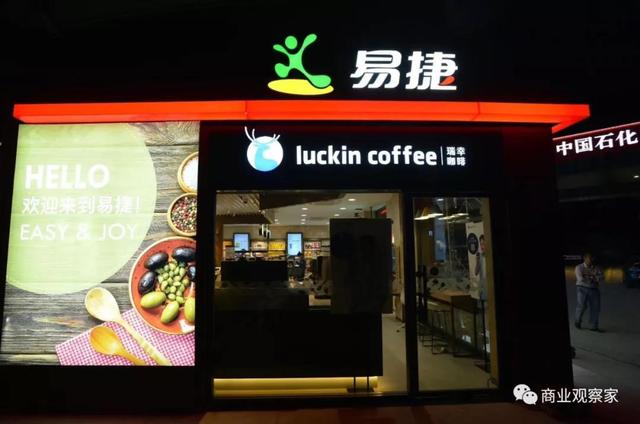
Luckin Coffee drove into the Sinopec gas station, how can Luckin Coffee's "infinite scene" play?
Professional coffee knowledge exchange more coffee bean information please follow the coffee workshop (Wechat official account cafe_style) driving, rest, looking for a steaming cup of freshly brewed coffee in the gas station convenience store refreshing, but only waiting for bottled coffee, instant coffee, or even can not buy coffee! It is believed that when countless coffee lovers stop at gas stations and rest stations,
- Next
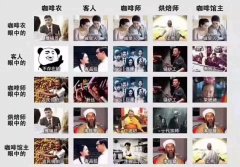
In your eyes, the barista, the baker, the owner of the cafe is actually like this.
Barista, even the name of this profession is fragrant and warm. The able appearance of black uniform cuffs rolled up high, exquisite
Related
- What brand of black coffee is the most authentic and delicious? what are the characteristics of the flavor of the authentic Rose Summer Black Coffee?
- Introduction to the principle and characteristics of the correct use of mocha pot A detailed course of mocha pot brewing coffee is described in five steps.
- Which is better, decaf or regular coffee? how is decaf made?
- How much is a bag of four cat coffee?
- How about four Cat Coffee or Nestle Coffee? why is it a cheap scam?
- Which is better, Yunnan four Cats Coffee or Nestle Coffee? How about cat coffee? is it a fake scam? why is it so cheap?
- How about Cat Coffee? what grade is a hoax? which instant coffee tastes better, four Cat Coffee, Nestle Coffee or G7 coffee?
- Process flow chart of coffee making-Starbucks coffee making process what coffee tastes good at Starbucks
- The top ten best coffee beans in the world Rose summer coffee or Tanzanian coffee tastes good
- Yunnan four cat coffee is good to drink?_four cat coffee is a big brand? four cat blue mountain coffee is fake?

